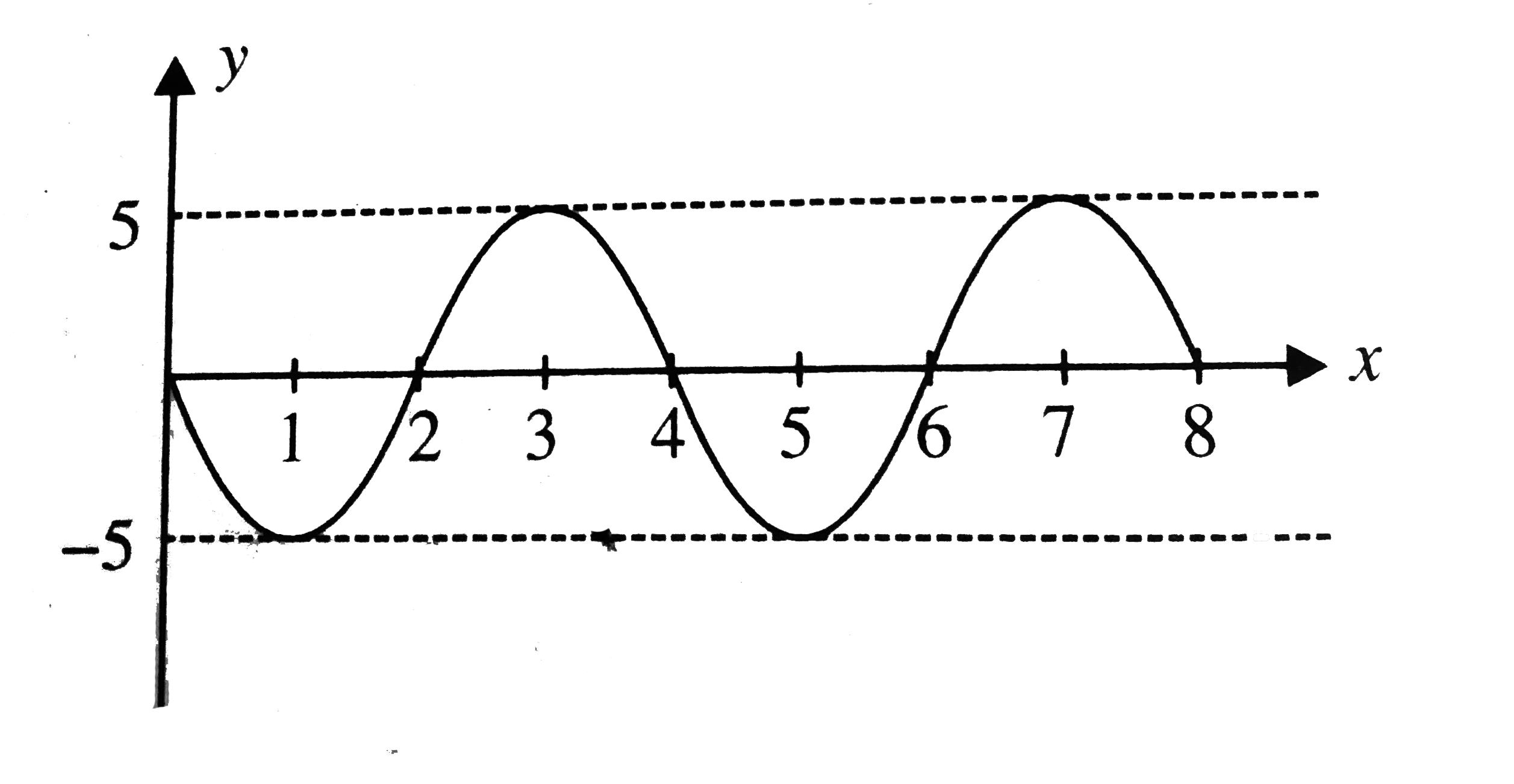Shows the shape of a progressive wave at time t=0. after a time t=(1)/(80), the particle at the origin has its maximum negative displacement.if the wave speed is 80 units maximum negative displacement. If the wave speed is 80 units, then find the equation of the progressive wave.  .
.
The wavelength λ=4
we know, T=λv=480=120
Since after t=180=T4,the particle at the origin is at its maximum negative, the entire wave pattern would have shifted by a distance of 1 unit (λ/4) to the left.
The wave moves in the negative x−axis direction, from this we get y=Asin[2π(tt+xλ)+ϕ]
we have initially y=0 for t=0 and x=0
ϕ=0,π,2π etc.
Also, y=−A, when t=T/4 and x=0
∴−A=Asin[2π(14)+ϕ]
⇒π2+ϕ=3π2,7π2etc.
or ϕ=π,3π,etc.
From Eqs. (i) and (ii), ϕ=π
Hence y=5sin[2π(t1/20+x(4))+π]
Topper's Solved these Questions
- BOOK - CENGAGE PHYSICSCHAPTER - TRAVELLING WAVESEXERCISE - Example9videos
TRAVELLING WAVES
- BOOK - CENGAGE PHYSICSCHAPTER - TRAVELLING WAVESEXERCISE - Exercise 5.19videos
TRAVELLING WAVES
- BOOK - CENGAGE PHYSICSCHAPTER - TRANSMISSION OF HEATEXERCISE - Single correct9videos
TRANSMISSION OF HEAT
- BOOK - CENGAGE PHYSICSCHAPTER - VECTORSEXERCISE - Exercise Multiple Correct5videos
VECTORS
Similar Questions
Knowledge Check
- Question 1 - Select One
The maximum particle velocity in a progressive wave is 4 times of the wave velocity. If the amplitude of the particle is 'A', then the wavelength of the wave is
A4π/ABπA/2C2π/ADA/2π - Question 2 - Select One
The maximum displacement of any particles either sides of mean position when a progressive wave is propagating through a medium is
AantinodeBamplitudeCnodeDwavelength - Question 3 - Select One
If the maximum speed of a particle on a travelling wave is v0, then find the speed of a particle when the displacement is half of the maximum value.
Av02B√3v04C√3v02Dv0
The equation of a simple harmonic progressive wave is y=Asin100π(t−x100) with all quantities in SI units. What is the speed of the wave ?
View SolutionThe equation of a plane progressive wave is y=Asin(πt−x3). Find the value of A for which the wave speed is equal to the maximum particle speed.
View SolutionThe displacement of the particle at x = 0 of a stretched string carrying a wave in the positive x-direction is given by f(t)sin(tT). The wave speed is v. Write the wave equation.
View SolutionA simple harmonic oscillator at the point x=0 genrates a wave on a rope. The oscillator operates at a frequency of 40.0 Hz and with an amplitude of 3.00 cm. the rope has a linear mass density of 50.0g/m and is strectches with a tension of 5.00 N. (a) determine the speed of the wave. (b) find the wavelength. (c ) write the wave function y(x,t) for the wave, Assume that the oscillator has its maximum upward displacement at time t=0. (d) find the maximum transverse acceleration at time t=0. (d) find the maximum transverse of points on the rope. (e) in the discussion of transverse waves in this chapter, the force of gravity was ignored. is that a reasonable assumption for this wave? explain.
View SolutionThe maximum particle velocity in a progressive wave is 4 times of the wave, velocity. If the amplitude of the particle is 'A', then the proagation constant is
View Solution

